Little Bunting Emberiza pusilla
Vagrant. Scandinavia, Russia
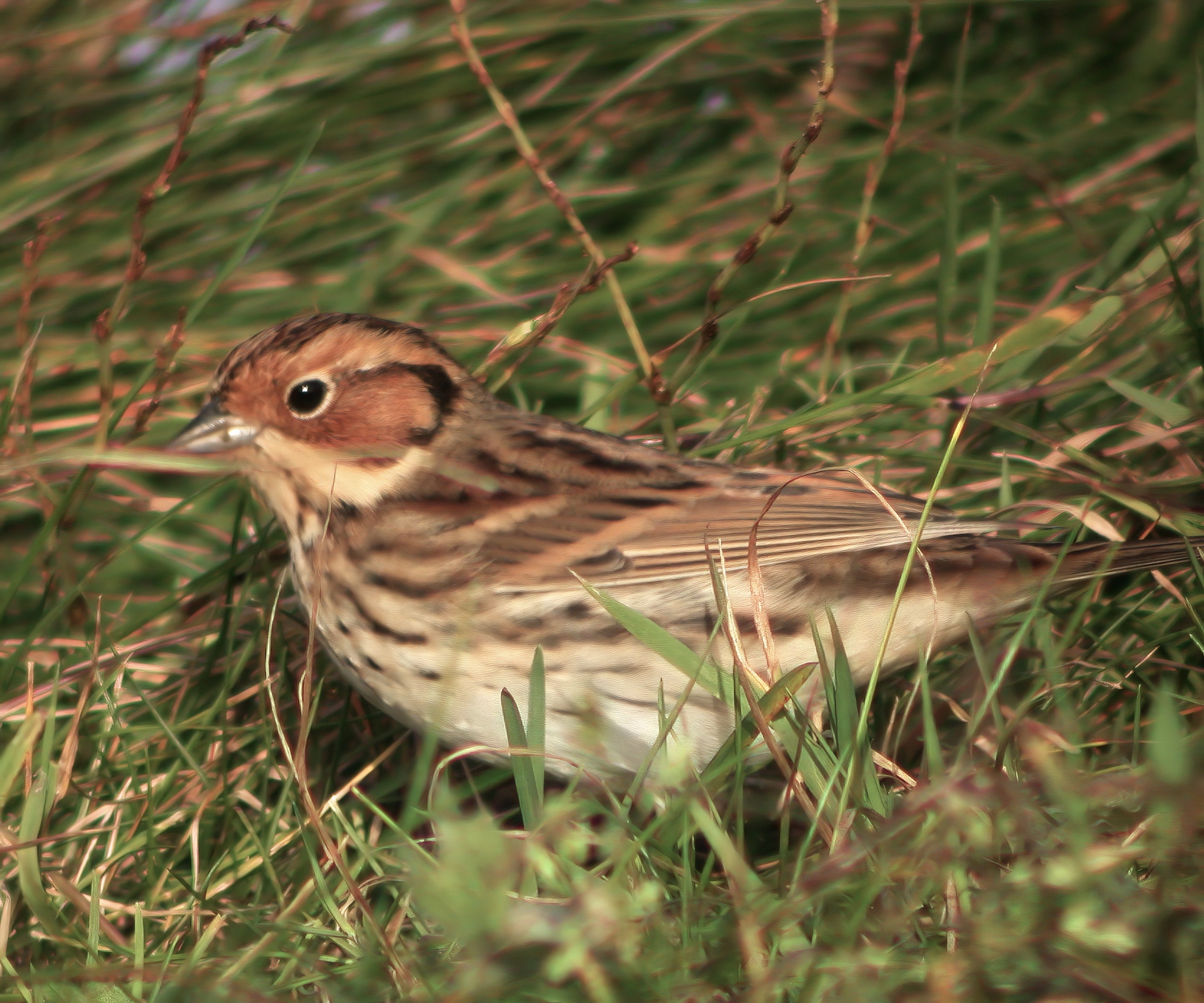
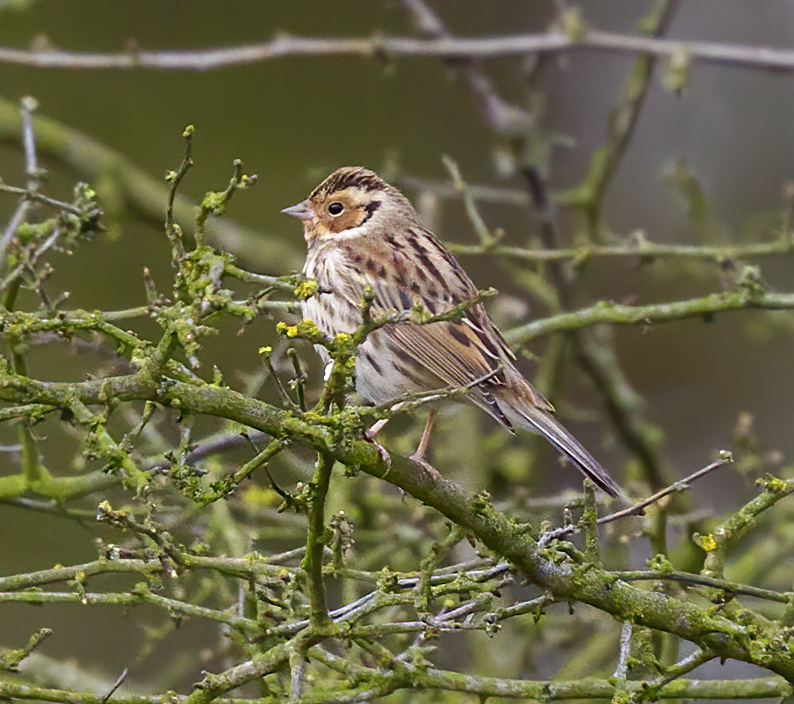
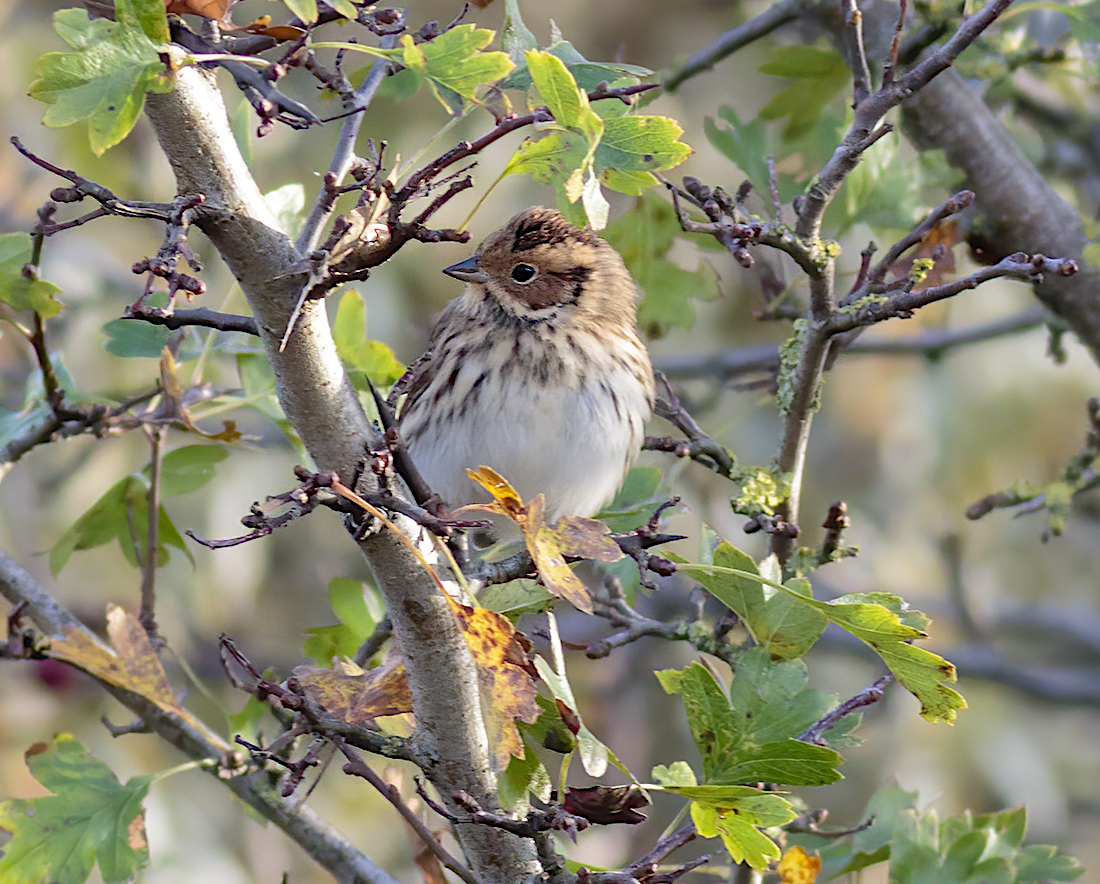
Little Buntings: left, Skegness October 23rd 2004 (John Wright); centre, Gainsborough March 2nd 2014, right, Donna Nook October 11th 2015 (Graham Catley)
The first Lincolnshire Little Bunting was killed at Saltfleet on 5th October 1951, reported in the LNU Transactions for 1952 (vol XIII, number 1) as follows:
"One, amongst sea-buckthorn, during a rush of Robins Erithacus rubecula , Saltfleet, October 5th. It was so tired that it was easily secured and proved to be an immature male. It appears to be a new county record. The skin is in the Chadwick Museum, Bolton. (E.G.)".
The total number of records up to an including 2021 stands at 23, 18 of them since 2000. It remains a vagrant in Lincolnshire, which is hard to understand given that Spurn Point just seven miles across the Humber had 47 birds between 1976 and 2014 (Roadhouse 2016). In Britain as a whole, there were 1,689 records 1958-2018. Twelve of the Lincolnshire records have been in the last 10 years to 2018 which reflects the recent large increase in the number of annual British records reported by White and Kehoe (2020). During 2000-2009 they occurred at a rate of 33 birds a year and this shot up to 74 birds per year in the period 2010-2018. Of the 19 Lincolnshire records, most (14) have been in autumn between September 27th-October 31st, three have been in winter and two in spring. Fifteen of the records have been on the coast between Tetney and Gibraltar Point with the latter site and Donna Nook both having had five. There have been four inland records including two recently, in February 2014 and December 2019, so it clearly pays to check finch and bunting flocks feeding in weedy fields inland as well as on the coast.
2015 - a record year
The year 2015 was an outstanding year for Little Buntings with the first being a spring bird found at Gibraltar Point on April 20th and still present on the 21st. There followed an astonishing four autumn records, all of them one-day birds. The first was at Saltfleetby-Theddlethorpe Dunes NNR, near Sea View Farm, on October 2nd. One was trapped and ringed at Gibraltar Point on October 10th with another at Donna Nook the next day, October 11th. A fourth bird, assumed to be different, was at Donna Nook on Oct 27th completing the autumn’s occurrences.
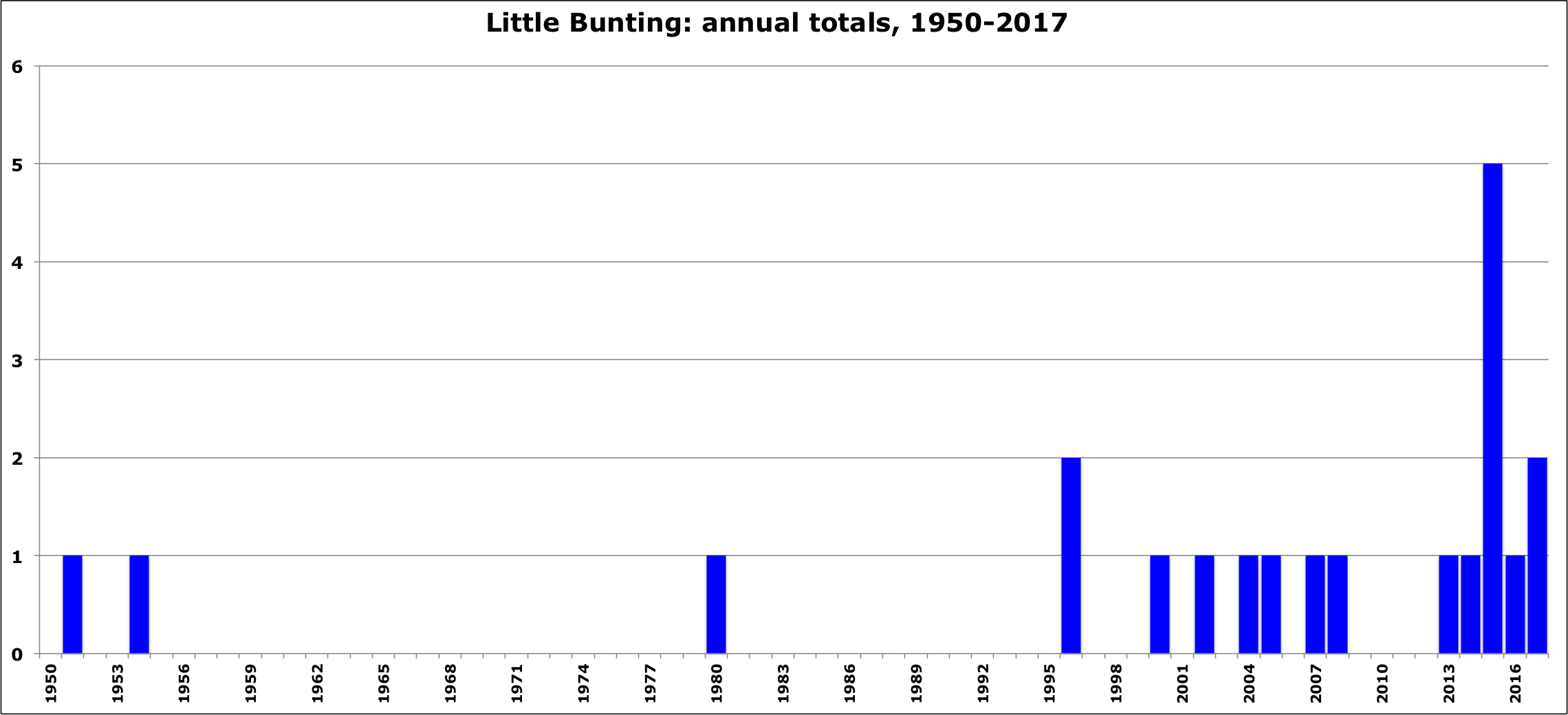
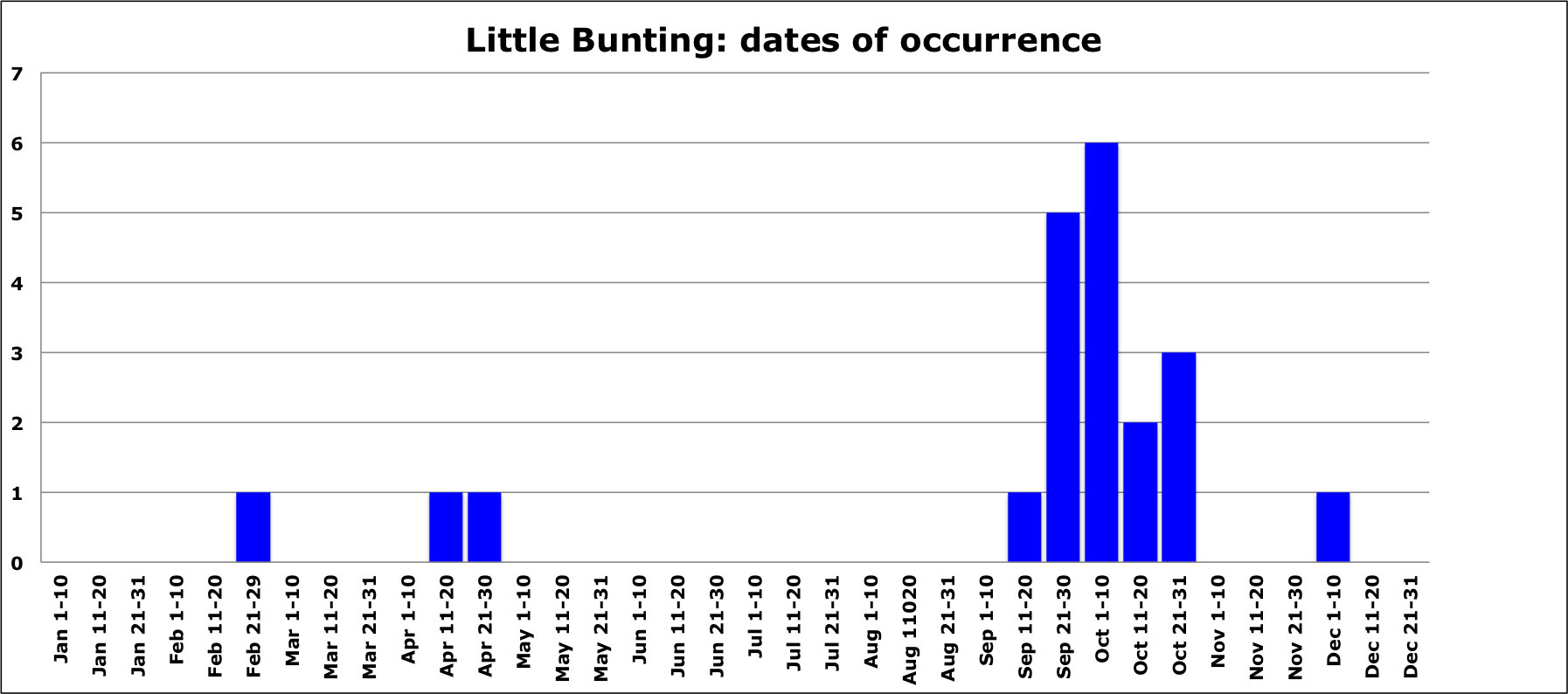
| Site | First date | Last date | Count | Notes |
| Saltfleet | 05/10/1951 | - | 1 | Imm male, killed. |
| Cowbit marshes | 02/10/1954 | - | 1 | |
| Wyberton | 04/12/1980 | - | 1 | |
| North Cotes | 19/09/1996 | - | 1 | |
| Donna Nook | 22/09/1996 | - | 1 | |
| Gibraltar Point NNR | 01/10/2000 | - | 1 | |
| Donna Nook | 25/10/2002 | - | 1 | |
| North Shore GC, Skegness | 20/10/2004 | 23/10/2004 | 1 | |
| Gibraltar Point NNR | 25/09/2005 | 26/09/2005 | 1 | |
| Pye's Hall, Donna Nook | 28/09/2007 | - | 1 | |
| Seacroft, Skegness | 31/10/2008 | - | 1 | |
| New Holland | 21/04/2013 | - | 1 | |
| Lea Marshes, Gainsborough | 25/02/2014 | 10/03/2014 | 1 | |
| Gibraltar Point NNR | 20/04/2015 | 21/04/2015 | 1 | Singing male. |
| Saltfleetby-Theddlethorpe NNR | 02/10/2015 | - | 1 | |
| Gibraltar Point NNR | 10/10/2015 | - | 1 | Trapped and ringed. |
| Donna Nook NNR | 11/10/2015 | - | 1 | |
| Donna Nook NNR | 27/10/2015 | - | 1 | Thought to be a different from that of 11th October. |
| Donna Nook NNR | 04/10/2016 | - | 1 | |
| Gibraltar Point NNR | 27/09/2017 | - | 1 | |
| Donna Nook NNR | 27/09/2017 | - | 1 | Trapped and ringed. |
| Gibraltar Point NNR | 04/10/2019 | - | 1 | |
| Middlemarsh Farm, Skegness | 07/12/2019 | - | 1 | |
| Saltfleet Haven | 09/10/2023 | - | 1 |
Finder’s report: Little Bunting at Wyberton Marsh, December 4th, 1980, third county record.
by P. Boyer.
Note: this account is taken from the original Rarities Committee submission. This was the third county record and the earliest that we have on file. The RC report noted that the 14 records in 1980 was a good showing, but not approaching the 25 seen in 1976. That brought the British total to 174, 1958-1980.
Circumstances
Whilst checking out a local ringing site for the possibility of a roost catch, I noticed an unusual call being made by a bird amongst Reed Buntings, Yellowhammers, Linnets, and thrushes. The call was a short, single note repeated once (“tip-tip”). The bird was a small bunting-like bird the size of a Linnet giving the overall suggestion of a Reed Bunting but with a distinctive head pattern.
I saw the bird at 14.50 hr. and watched it for 15 minutes using 10 x 50 binoculars at a distance of down to 20 ft. There was a moderate NW wind with 100% cloud cover. Light conditions were good about one hour before dusk but deteriorating.
The bird flew with Reed Buntings from its position in Hawthorn bushes to a nearby dyke side where it appeared to feed on the ground for a short time. Flight very similar to Reed Bunting but the tail was noticeably shorter in flight. It returned to the roost with the flock of Reed Buntings and disappeared into a small bed of Phragmites. Two subsequent visits failed to relocate the bird and the weather thwarted any attempts to net the roost.
Description
Size – about the size of a Linnet.
Head – creamy-buff stripe above the eye which continued around the cheek forming a moustachial stripe. Cheeks were a uniform dull chestnut in colour. Crown was chestnut-brown with darker edges. There was a very thin creamy eye ring around a dark eye.
Upperparts – upperparts and rump were dark brown with black streaks and wings were very similar to Reed Bunting in colouration. Tail was shorter than Reed Bunting and was dark brown with outer feathers showing some white.
Underparts – whitish with fine dark streaks.
Bare parts - bill was dark brown and legs were brownish, and the bird had a BTO-type metal ring on its left leg.
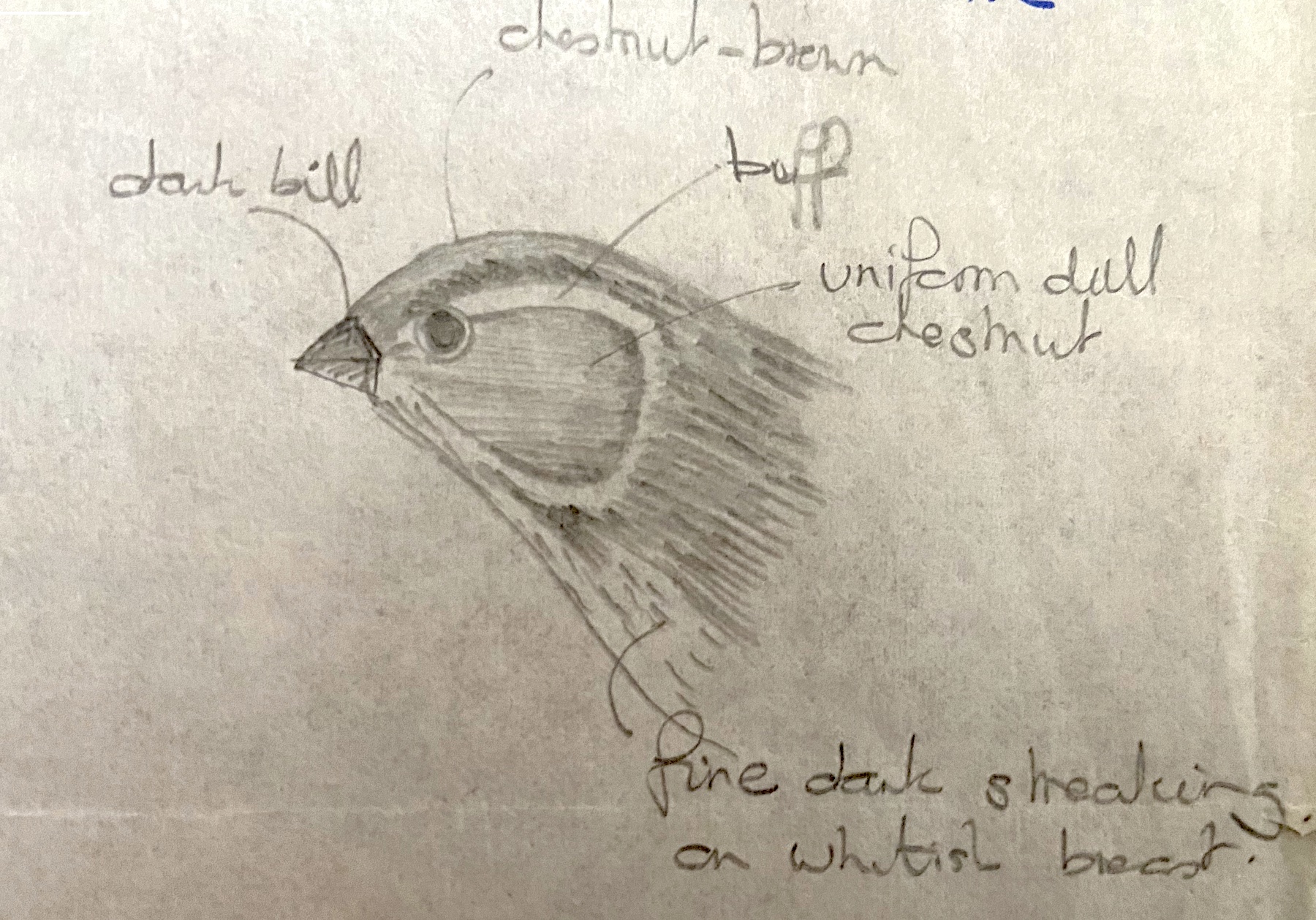
Sketch of the Little Bunting at Wyberton Marsh, December 4th 1980, by Paul Boyer, from his original RC submission.
(Account prepared April 2019; updated with reference to the new Birds of Lincolnshire (2021) January 2023)

